|
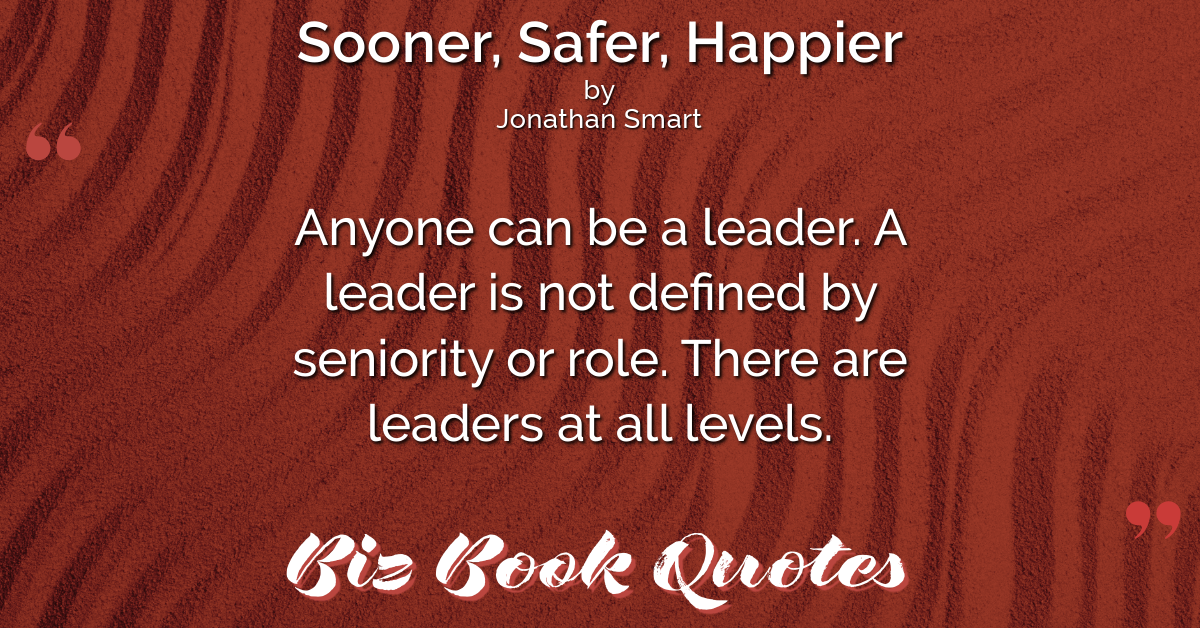
|
Sooner Safer Happier:
Anyone can be a leader. A leader is not defined by seniority or role. There are leaders at all levels.
|
130 |
|
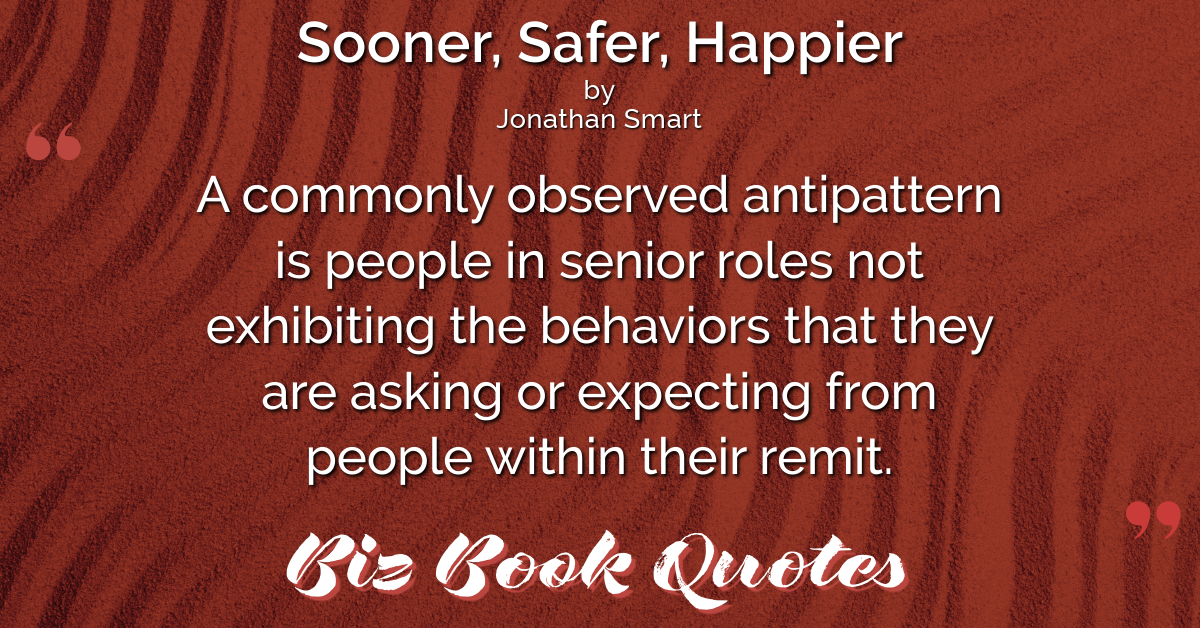
|
Sooner Safer Happier:
A commonly observed antipattern is people in senior roles not exhibiting the behaviors that they are asking or expecting from people within their remit.
|
130 |
|

|
Sooner Safer Happier:
The biggest lever for better ways of working, leading to better outcomes, is behavior. Change is a social activity.
|
131 |
|

|
Sooner Safer Happier:
Leading requires courage. It requires exhibiting vulnerability; in some cases it requires being a beginner again, trying something new…
|
131 |
|

|
Sooner Safer Happier:
In a crisis, people generally use their initiative and don’t wait to be given step-by-step orders. The trick is to maintain this without the chaos.
|
132 |
|
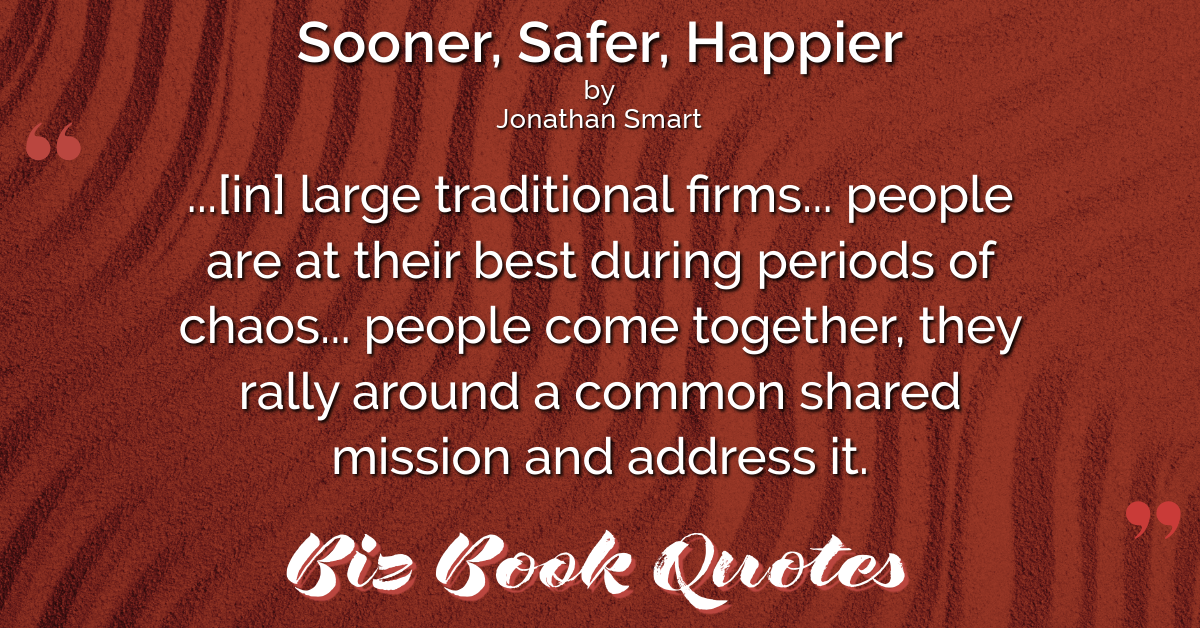
|
Sooner Safer Happier:
…[in] large traditional firms… people are at their best during periods of chaos… people come together, they rally around a common shared mission and address it.
|
132 |
|
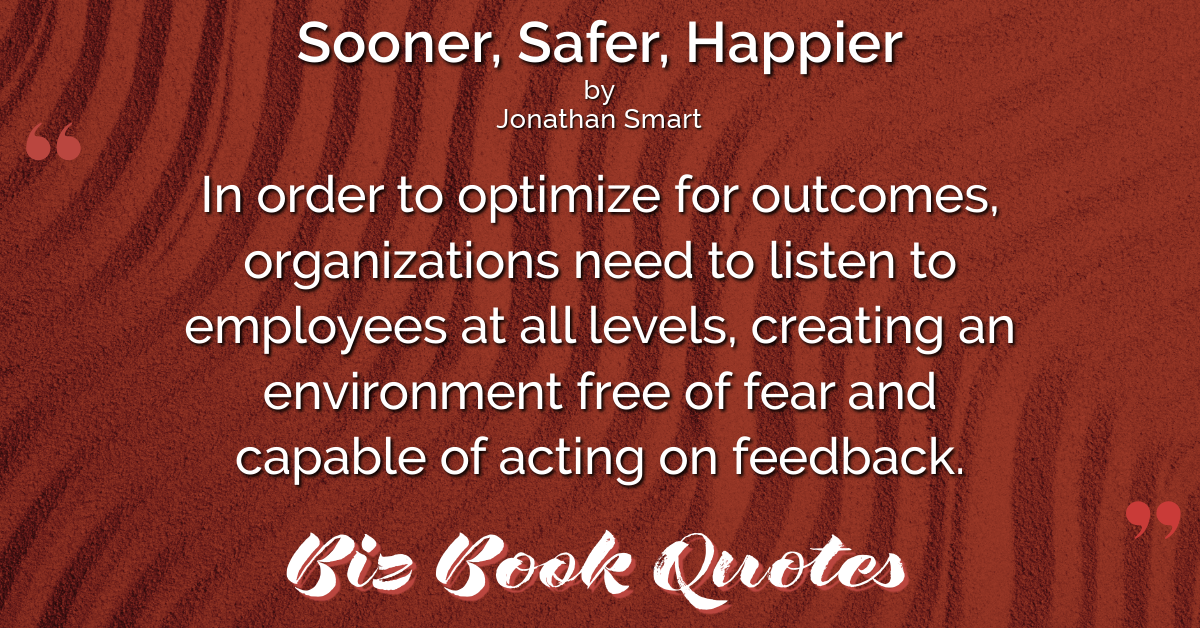
|
Sooner Safer Happier:
In order to optimize for outcomes, organizations need to listen to employees at all levels, creating an environment free of fear and capable of acting on feedback.
|
140 |
|
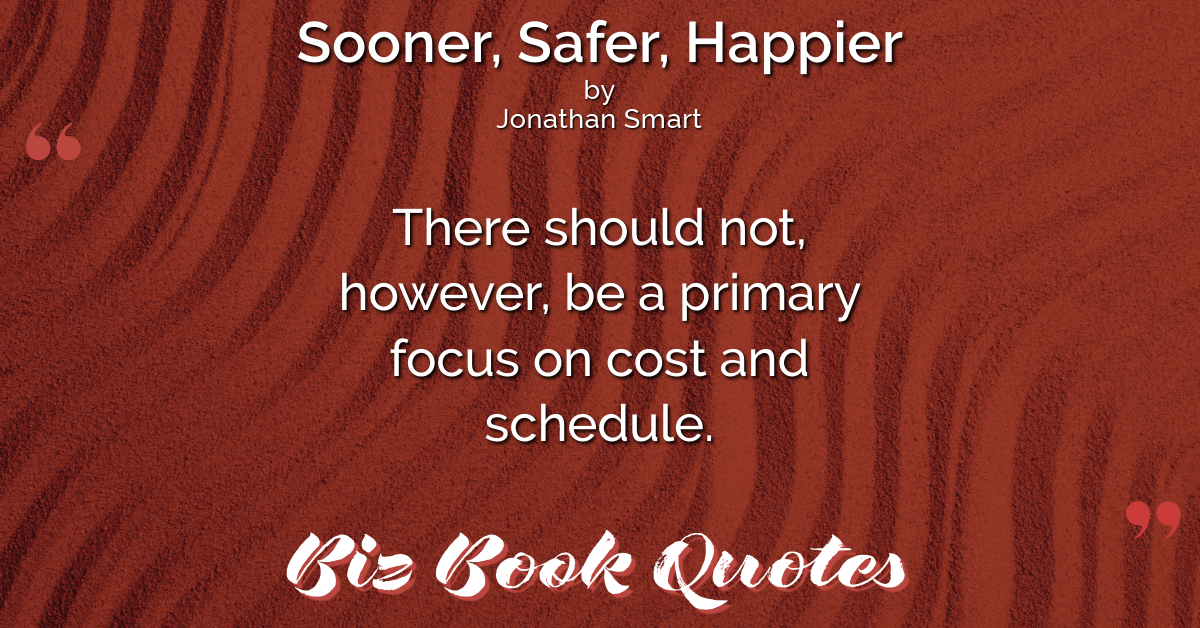
|
Sooner Safer Happier:
There should not, however, be a primary focus on cost and schedule.
|
140 |
|
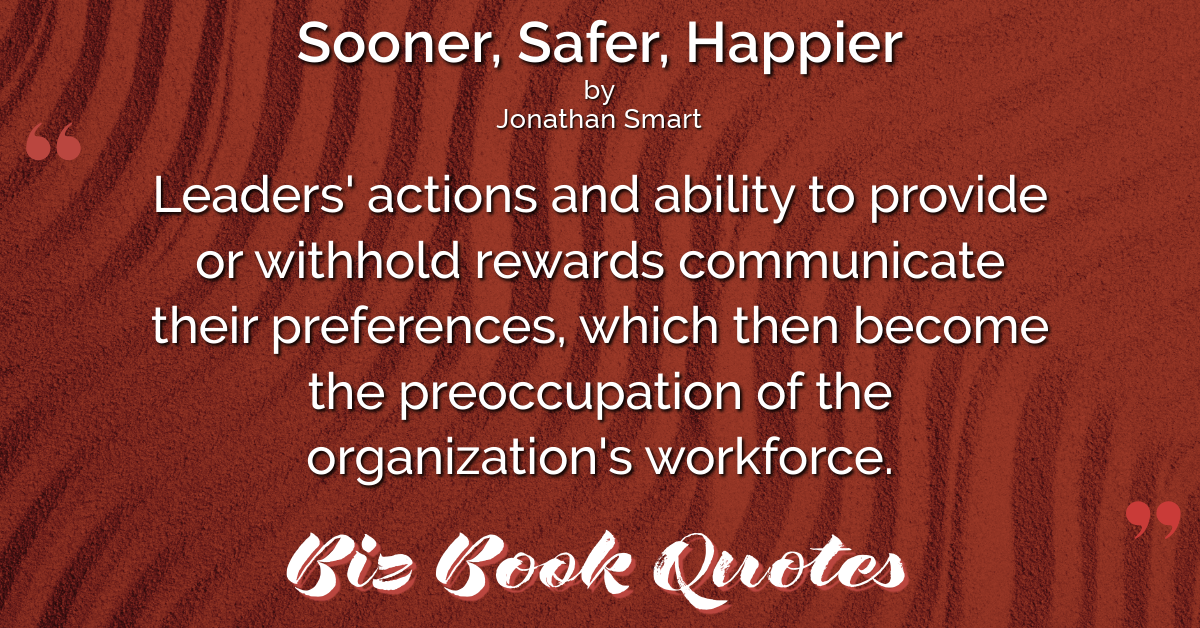
|
Sooner Safer Happier:
Leaders’ actions and ability to provide or withhold rewards communicate their preferences, which then become the preoccupation of the organization’s workforce.
|
140 |
|

|
Sooner Safer Happier:
The more effective teams exhibit more psychological safety. Rather than concealing fear and blame, there is openness, dialogue, and inquiry.
|
142 |











